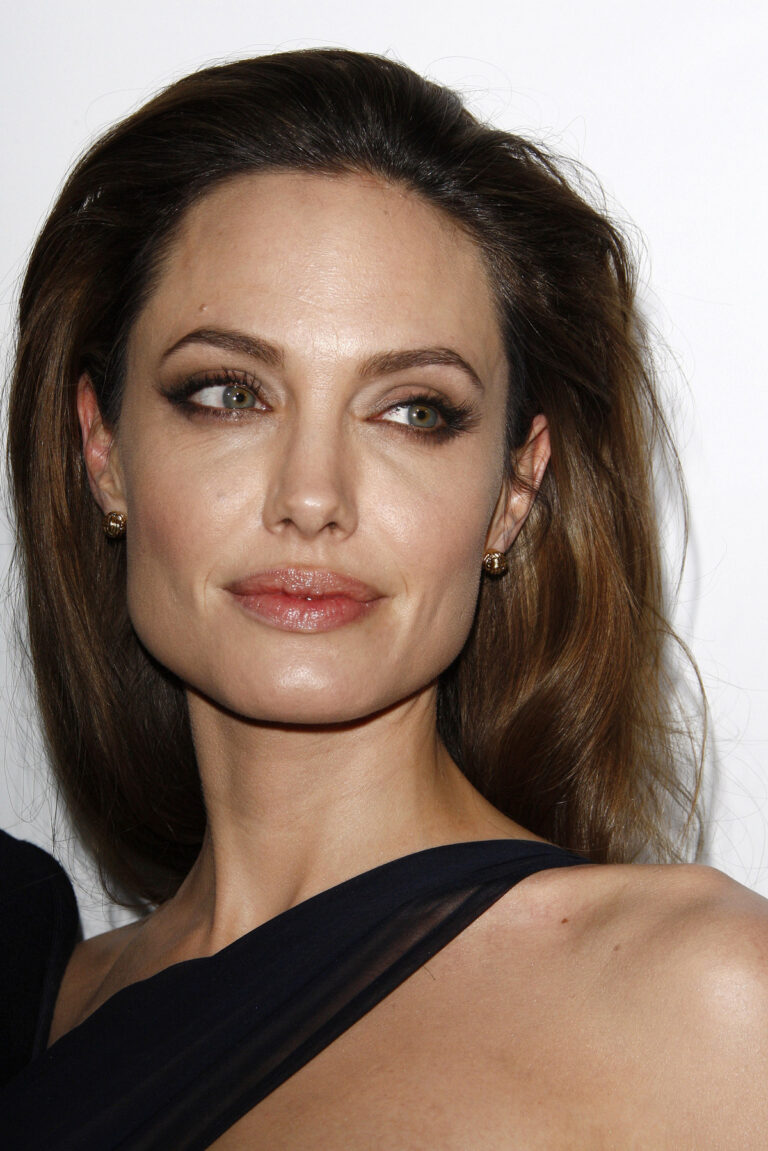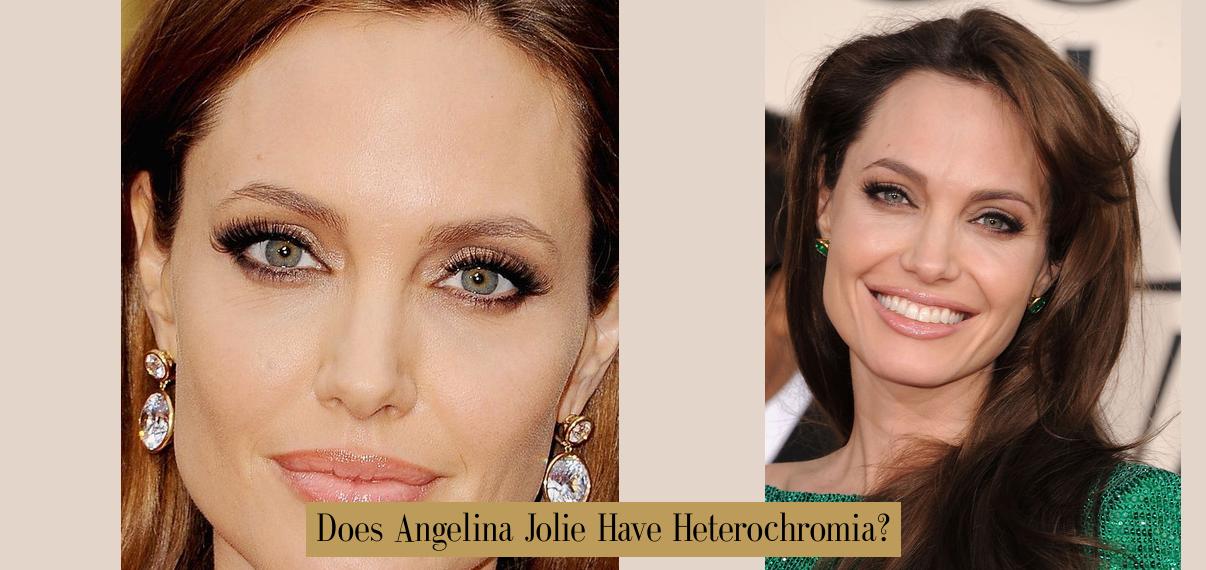Does Angelina Jolie Have Heterochromia? Unpacking The Mystery Of Her Striking Eyes
Detail Author:
- Name : Nia Lynch
- Username : slynch
- Email : yoreilly@gmail.com
- Birthdate : 2000-02-21
- Address : 3637 Fletcher Stravenue Davisberg, WI 26010
- Phone : +1 (726) 449-6689
- Company : Runolfsson-Schoen
- Job : Supervisor Correctional Officer
- Bio : Aliquam molestiae ut modi praesentium autem ad accusamus. Delectus voluptatem nam odio incidunt fugiat assumenda.
Socials
tiktok:
- url : https://tiktok.com/@jewell6132
- username : jewell6132
- bio : Consectetur illum animi placeat et facilis et. Ab voluptatem esse rerum quis.
- followers : 5562
- following : 1257
instagram:
- url : https://instagram.com/jewellsanford
- username : jewellsanford
- bio : Voluptas voluptate est mollitia est et autem. Dolorem beatae qui nemo earum et corporis.
- followers : 6551
- following : 1871
linkedin:
- url : https://linkedin.com/in/jsanford
- username : jsanford
- bio : Et sit autem corporis eos cum dolorum.
- followers : 6732
- following : 2153
twitter:
- url : https://twitter.com/jewell_xx
- username : jewell_xx
- bio : Distinctio et recusandae consequuntur ratione quisquam. Sint beatae nam dicta. Et aut ut recusandae impedit magnam.
- followers : 944
- following : 242
facebook:
- url : https://facebook.com/sanfordj
- username : sanfordj
- bio : Eum deserunt natus totam nemo quo repellat a possimus.
- followers : 3141
- following : 769
Have you ever found yourself gazing at a picture of Angelina Jolie and wondering about her captivating eyes? Many people do, you know, and it's a very common question that pops up in conversations about her. Her eyes, often described as a piercing blue or sometimes a striking green-gray, certainly draw a lot of attention. There's just something about them that makes you look a little longer, isn't there?
This curiosity often leads to a specific question: Does Angelina Jolie have heterochromia? It's a fascinating thought, especially when you consider how distinctive her gaze appears in different lights or photos. People are always keen to learn about unique traits in public figures, and eye color is one of those things that really stands out. So, let's explore this interesting question together.
We're going to take a closer look at what heterochromia actually is, how eye color comes about, and then we'll address the buzz surrounding Angelina Jolie's eyes. You might be surprised by what we uncover, as a matter of fact. It's a journey into the science of vision and the allure of celebrity features, all wrapped into one discussion.
Table of Contents
- Angelina Jolie: A Glimpse into Her World
- Understanding Eye Color and Heterochromia
- Does Angelina Jolie Have Heterochromia? The Real Scoop
- Celebrities and Unique Eye Traits
- Frequently Asked Questions
- Final Thoughts
Angelina Jolie: A Glimpse into Her World
Brief Biography
Angelina Jolie, born Angelina Jolie Voight, came into the world on June 4, 1975, in Los Angeles, California. She's widely known as an American actress, filmmaker, and humanitarian. Her acting journey began in the early 1990s, and she quickly rose to prominence with roles that showcased her intense presence and acting skills. For instance, she earned an Academy Award for Best Supporting Actress for her part in the 1999 film "Girl, Interrupted."
Beyond her successful film career, Angelina Jolie is also very active in humanitarian efforts. She has worked extensively with the United Nations High Commissioner for Refugees (UNHCR) as a Special Envoy, bringing attention to global refugee crises. Her work in both film and advocacy has made her a truly recognizable figure around the globe, and people often admire her commitment to important causes, you know.
Personal Details & Bio Data
| Full Name | Angelina Jolie Voight |
| Date of Birth | June 4, 1975 |
| Birthplace | Los Angeles, California, U.S. |
| Occupation | Actress, Filmmaker, Humanitarian |
| Eye Color | Blue/Green/Gray (often described as varying) |
| Hair Color | Dark Brown |
| Height | 5 ft 7 in (170 cm) |
| Notable Works | Girl, Interrupted, Lara Croft: Tomb Raider, Maleficent |
Understanding Eye Color and Heterochromia
What is Heterochromia?
Heterochromia is a condition where a person has different colored eyes, or parts of one eye have a different color than the rest. It's a rather distinctive trait, and it can show up in a few different ways. For example, some people might have one blue eye and one brown eye, which is called complete heterochromia. That's a very clear difference, typically.
Then there's sectoral heterochromia, where only a segment of one iris is a different color from the rest of that same iris. Imagine an eye that's mostly blue, but with a noticeable brown wedge in it; that's sectoral. Central heterochromia, on the other hand, involves a different color ring around the pupil, with the outer part of the iris being another color. This often creates a striking effect, like a gold ring around the pupil with a blue outer iris, you know.
The term "heterochromia iridum" specifically refers to the difference in color of the iris, the colored part of the eye. It's a relatively rare occurrence in humans, making those who have it quite unique. It's not just about aesthetics, though; sometimes, it can be linked to other health considerations, but often it's just a harmless genetic variation.
How Does Eye Color Happen?
Eye color is a fascinating thing, and it's mostly determined by the amount of melanin, a pigment, in the iris. Melanin is the same pigment that gives color to our skin and hair. The more melanin you have in the front layers of your iris, the darker your eyes will be. For instance, people with a lot of melanin tend to have brown eyes.
Blue eyes, surprisingly, don't have blue pigment at all. Instead, they have very little melanin in the front layer of the iris. The blue color we see is actually due to the scattering of light, a phenomenon called Rayleigh scattering, which is similar to why the sky appears blue. Green eyes, meanwhile, have a bit more melanin than blue eyes, combined with this light scattering effect, giving them their unique hue. It's a complex interplay, really.
Genetics play a huge role in all of this, too. While it was once thought that eye color was determined by a single gene, we now understand that multiple genes are involved. This makes the inheritance of eye color much more intricate and can lead to a wider range of shades and variations, even within families. So, a child's eye color isn't always a simple prediction based on their parents', which is quite interesting.
Is Heterochromia Common?
Heterochromia is, in fact, not very common in humans. While you might spot it more often in certain animal breeds, like huskies or cats, it's quite rare for people to have it. When it does occur, it can be present from birth, which is known as congenital heterochromia. This type is usually harmless and doesn't affect vision. It's just a unique genetic trait, more or less.
However, heterochromia can also develop later in life, and this is called acquired heterochromia. This type can sometimes be a sign of an underlying health issue, such as an eye injury, certain medications, or conditions like inflammation or glaucoma. If someone notices a sudden change in their eye color, it's always a good idea to have it checked out by an eye doctor, just to be safe. It's important to remember that while it's often benign, a new onset of different eye colors should always prompt a visit to a medical professional. You can learn more about heterochromia and its causes from reliable sources like the American Academy of Ophthalmology.
So, while it adds a striking visual element to a person's appearance, heterochromia isn't something you see every day. Its rarity is part of what makes it so captivating and often a topic of discussion when it comes to famous individuals. It's a truly unique feature, and people often find themselves quite drawn to it, you know.
Does Angelina Jolie Have Heterochromia? The Real Scoop
Addressing the Common Perception
Now, to the question that brought us here: Does Angelina Jolie have heterochromia? The simple answer, based on widely available information and visual evidence, is generally no, she does not have true heterochromia in the medical sense. Her eyes are consistently described as a striking blue, sometimes appearing with hints of green or gray depending on the light. This is a bit different from having two distinctly different colored eyes or a clear segment of another color within one eye, you see.
Many people might perceive a difference because her eyes are so expressive and seem to shift in hue. This isn't unusual, as eye color can indeed appear to change with lighting, clothing, or even mood. But it's not the same as the medical condition of heterochromia, where the actual pigment distribution is different. So, while her eyes are undeniably beautiful and memorable, they don't typically exhibit the characteristics of heterochromia.
Her Famous Eyes: What Makes Them Special?
Angelina Jolie's eyes are, without a doubt, one of her most recognized features. They are often described as a very intense shade of blue, sometimes leaning towards a greenish-gray. This particular shade, combined with her strong gaze, gives her a truly captivating look. It's that kind of look that really stays with you, you know?
The variation in how her eye color is perceived likely comes down to several factors. For instance, the type of light she's in can make a huge difference. Natural daylight might bring out more of the blue, while artificial light could emphasize any green or gray undertones. Her makeup choices, too, can play a role, as certain colors can make her eyes appear more vibrant or shift their perceived hue. This is quite common for many people with light-colored eyes, actually.
It's also worth noting that the human eye itself is a complex structure. The distribution of melanin, even in a single-colored eye, isn't always perfectly uniform. Subtle variations can create depth and different shades within the iris, which might contribute to the impression of shifting colors. So, while her eyes are consistently blue, their depth and intensity give them a unique appeal that often sparks conversation, and that's pretty cool.
Why the Confusion?
The confusion surrounding Angelina Jolie's eye color and the question of heterochromia probably stems from a few things. First, as we mentioned, her eye color can appear to vary quite a bit depending on the lighting conditions, the colors she wears, and even the camera flash. A bright blue in one photo might look more muted or greenish in another, leading people to wonder if there's a fundamental difference. This is a pretty common optical illusion, you know.
Second, there's a general fascination with unique physical traits in celebrities. When someone has such striking eyes, people naturally look for an explanation or a special label. Heterochromia is a known, albeit rare, condition that results in different eye colors, so it's a plausible guess for someone trying to understand a celebrity's distinctive look. People are often quick to assign a specific term to something that seems out of the ordinary, even if it's not quite accurate, more or less.
Finally, the sheer volume of images of Angelina Jolie available online, taken under countless different circumstances, contributes to the varied perceptions. A single image might capture a moment where her eyes look slightly different due to a reflection or shadow, prompting speculation. It's a bit like how some people might think a celebrity has a certain feature just because of a single photo, when in reality, it's not consistently there. So, while the question "Does Angelina Jolie have heterochromia?" is understandable, the answer typically leans towards her having consistently beautiful, vibrant blue eyes that simply appear to change with their surroundings.
Celebrities and Unique Eye Traits
Other Famous Individuals with Heterochromia or Distinctive Eyes
While Angelina Jolie might not have heterochromia, there are indeed many other famous people who do, or who have other truly unique eye traits. This just goes to show how diverse and interesting human features can be. For example, David Bowie, the legendary musician, had what appeared to be different colored eyes. However, his case was actually due to anisocoria, a condition where one pupil is permanently dilated, making his eyes look different in color due to the light entering them differently. It's a fascinating example of how perception can sometimes be misleading, you know.
Mila Kunis is another well-known actress who has complete heterochromia, with one green eye and one brown eye. This is a classic example of the condition, and it's quite noticeable once you know to look for it. Kate Bosworth, an actress, also has sectoral heterochromia; one of her blue eyes has a small, distinct hazel patch. These are genuine instances of the condition, and they add a very distinct charm to their appearance. It's pretty cool to see how these natural variations play out in public figures.
Then there's Henry Cavill, the actor known for playing Superman, who has a subtle form of heterochromia, sometimes described as central heterochromia, where his blue eyes have a slight brownish-green ring around the pupil. These examples highlight the various ways heterochromia can manifest, from very obvious differences to more subtle variations. It just goes to show that unique eye traits are more common than you might think among famous faces, and they certainly add to their appeal, you know.
Why Are We So Fascinated?
It's a really interesting question why we, as people, are so drawn to unique physical features, especially in celebrities. Part of it, perhaps, is that these traits make individuals stand out from the crowd. In a world where so many things can seem uniform, a distinctive eye color or a unique facial feature becomes a point of fascination. It makes someone feel a bit more special, doesn't it?
There's also the element of beauty standards and what we perceive as attractive. Sometimes, a unique feature like heterochromia can be seen as an enhancement, adding an intriguing quality to a person's look. It's a deviation from the norm that many find quite appealing. Furthermore, celebrities live in the public eye, and every detail about them is often scrutinized and discussed. Their unique traits become talking points, adding to their mystique and public persona, you know.
Ultimately, our fascination might just come down to human curiosity. We're naturally inclined to notice differences and to try and understand them. Whether it's a rare eye color or another unusual characteristic, these traits spark questions and conversations, drawing us deeper into the stories of the people who possess them. It's a way of connecting with the unique aspects of human diversity, even when it's just about a celebrity's eyes, you know.
Frequently Asked Questions
Here are some common questions people often ask about Angelina Jolie's eyes and heterochromia:
Does Angelina Jolie have different colored eyes?
No, Angelina Jolie does not have two distinctly different colored eyes, which is a common form of heterochromia. Her eyes are consistently blue, though their exact shade can appear to change with lighting and other factors. So, it's more about perception than an actual medical condition, you know.
What is heterochromia iridum?
Heterochromia iridum is a condition where the iris, the colored part of the eye, has different colors. This can mean one eye is a different color from the other (complete heterochromia), or parts of one eye are a different color from the rest of that same eye (sectoral or central heterochromia). It's a pretty rare trait in humans, actually.
Which celebrities have heterochromia?
While Angelina Jolie does not, several other celebrities do have heterochromia. Mila Kunis has complete heterochromia with one green and one brown eye. Kate Bosworth has sectoral heterochromia, with a hazel patch in one of her blue eyes. David Bowie also famously appeared to have different colored eyes, though his was due to an injury, not true heterochromia, you know.
Final Thoughts
So, after looking into it, it seems the answer to "Does Angelina Jolie have heterochromia?" is that she doesn't, at least not in the typical medical sense. Her eyes are, in fact, a beautiful and consistent blue, though they often appear to shift in shade depending on the light and other environmental factors. This natural variation is quite common and contributes to their striking appearance, you know.
What this discussion really highlights is our natural curiosity about unique human features, especially when it comes to well-known figures. Whether it's the science behind eye color or the visual intrigue of conditions like heterochromia, there's always something more to learn about the human body and its amazing diversity. It's a reminder that beauty comes in many forms, and sometimes, the most captivating aspects are those we simply perceive, rather than a specific medical condition. You can learn more about eye health on our site, and perhaps even discover more about human perception and how it shapes our view of the world.


